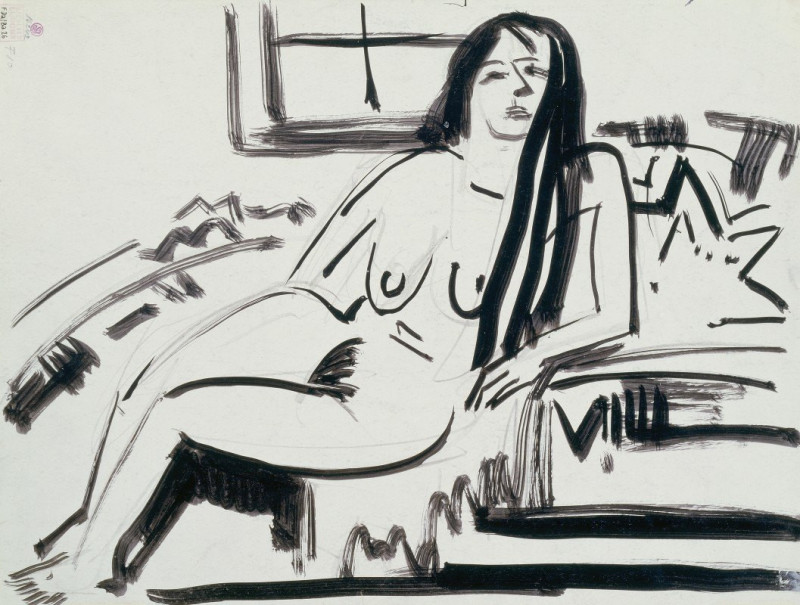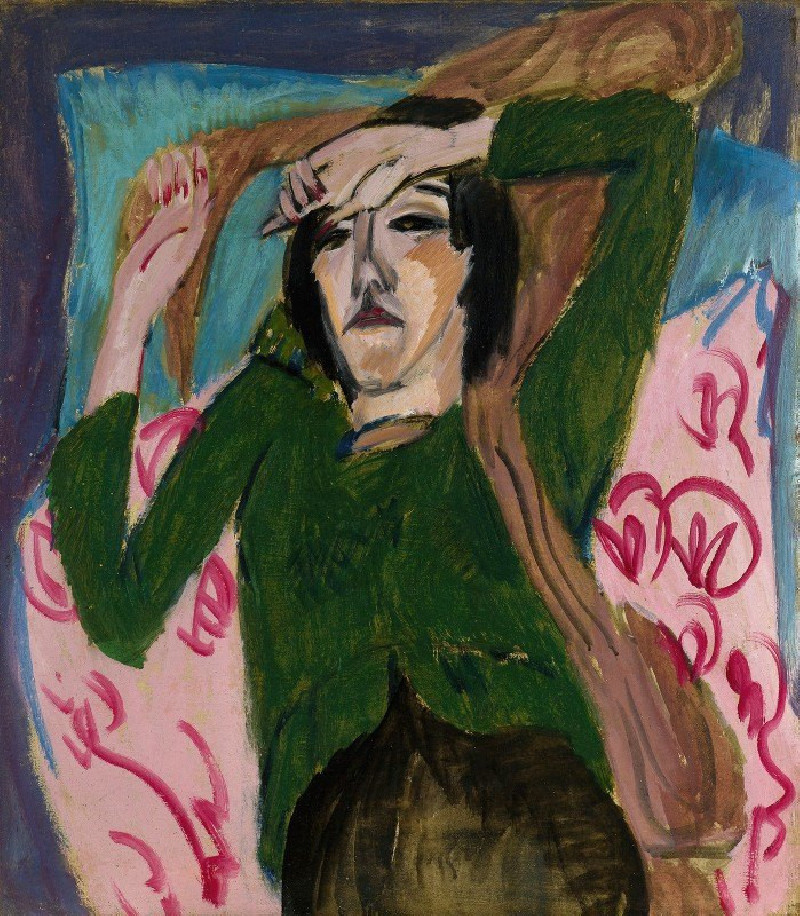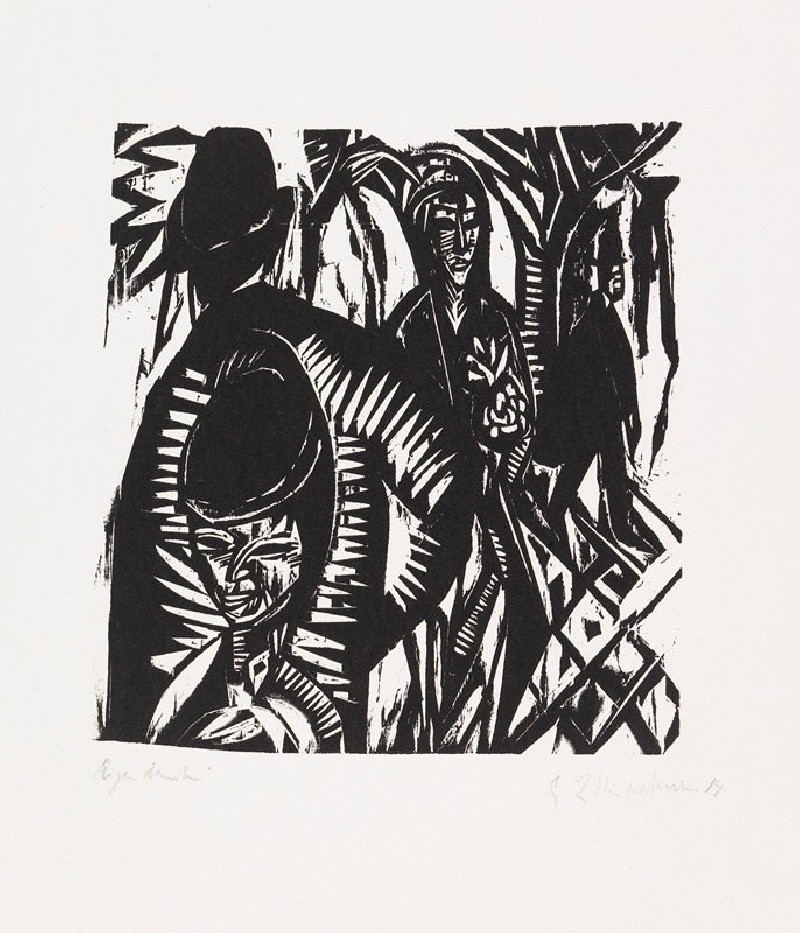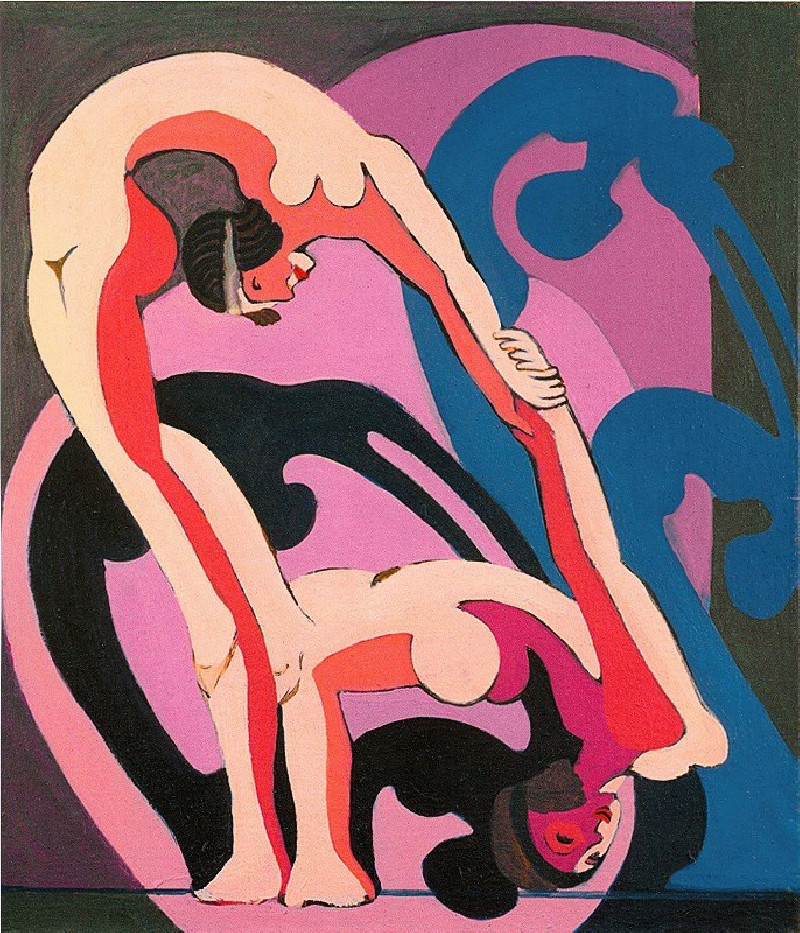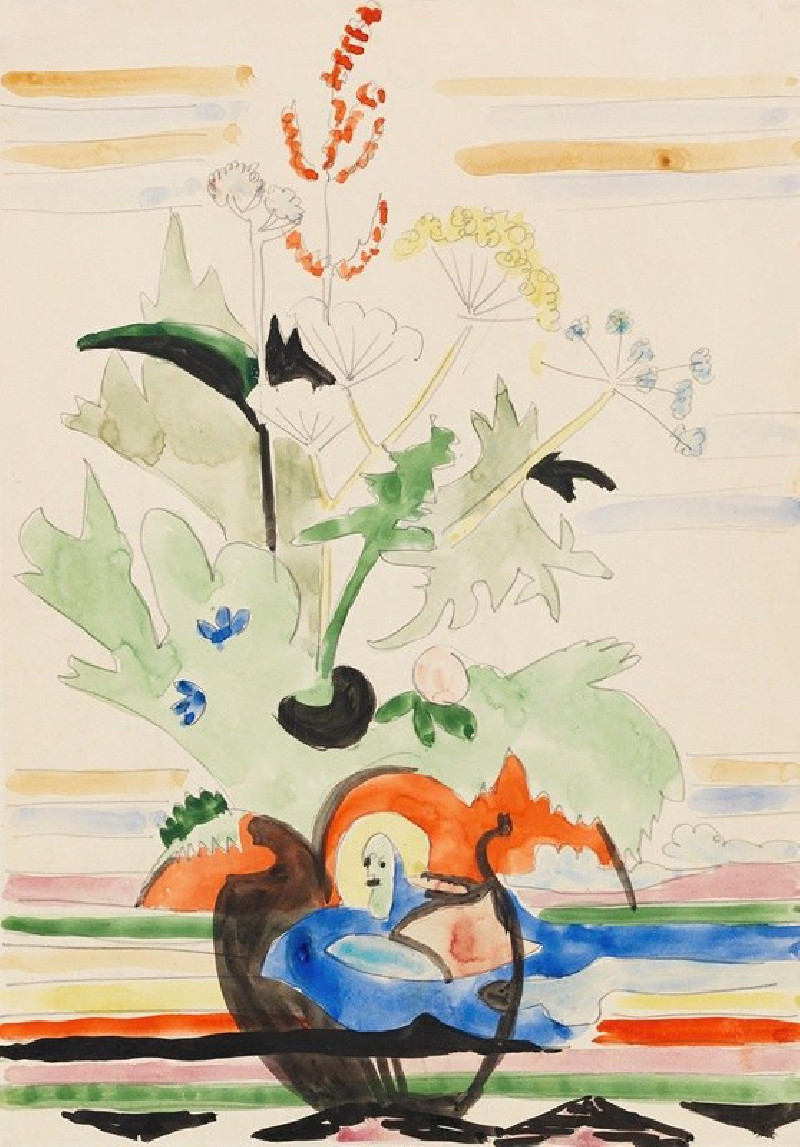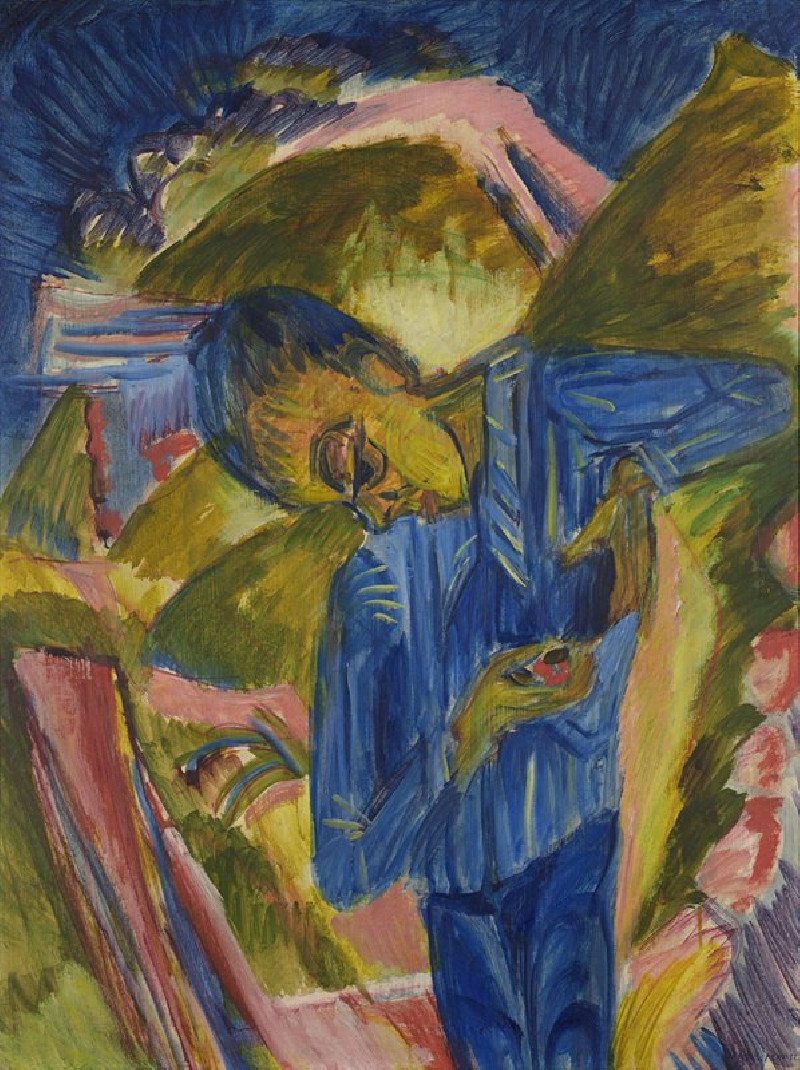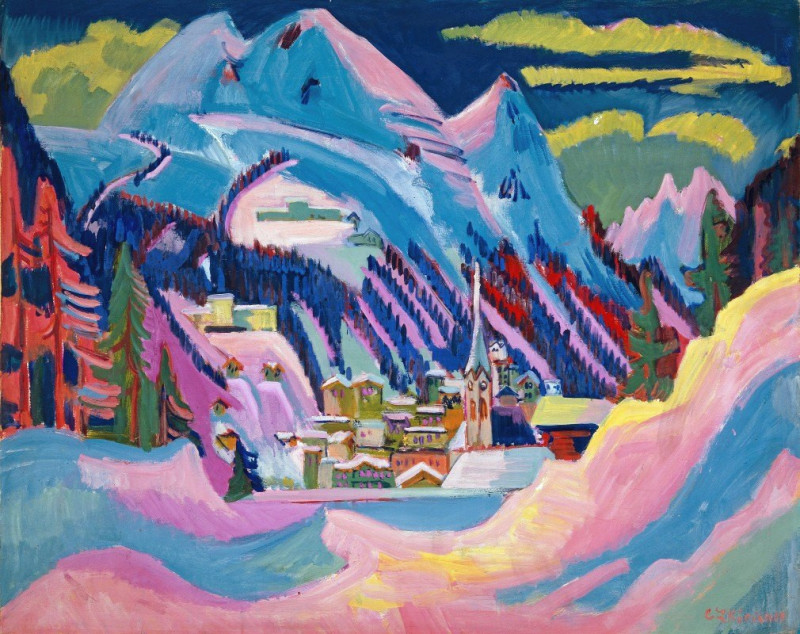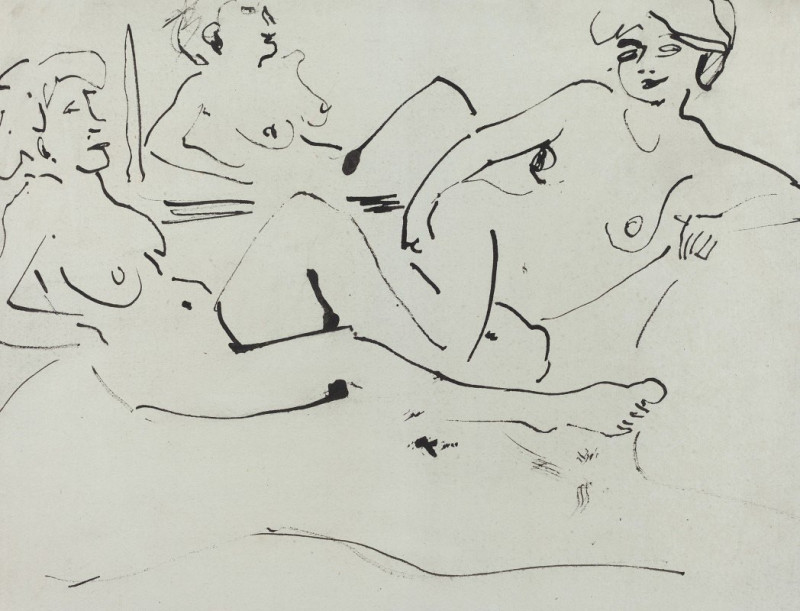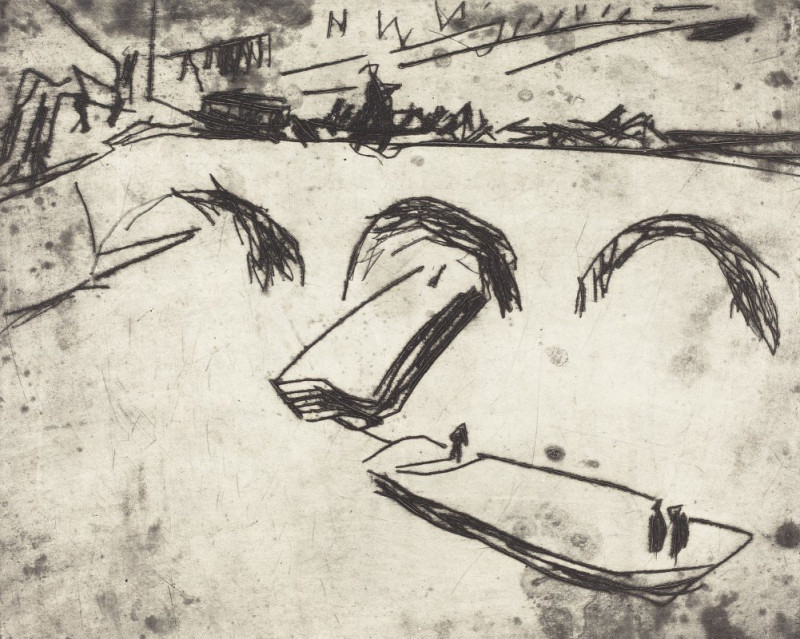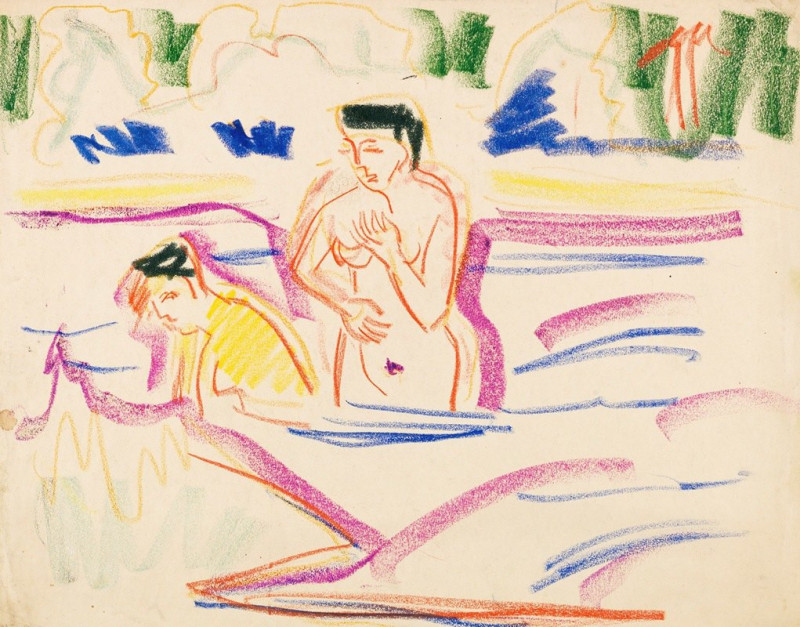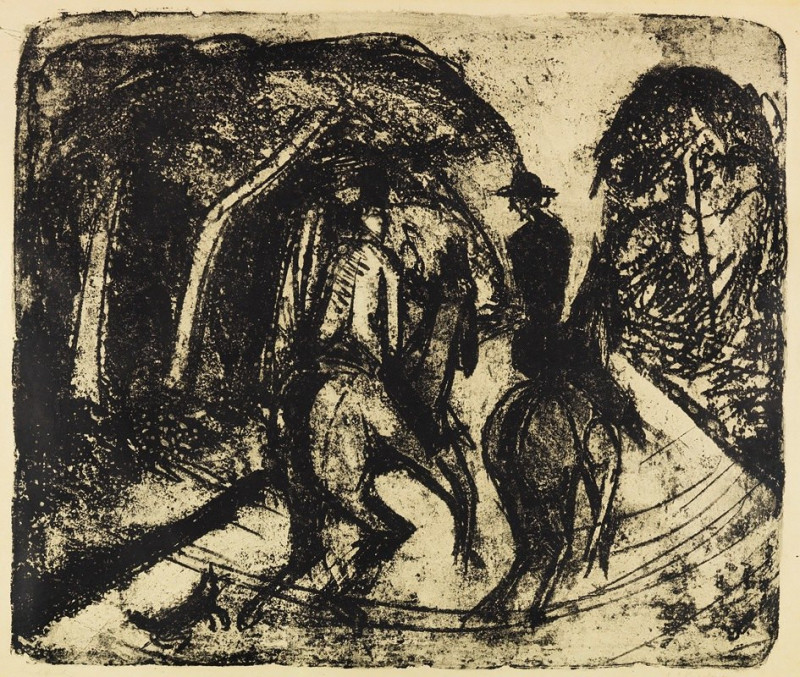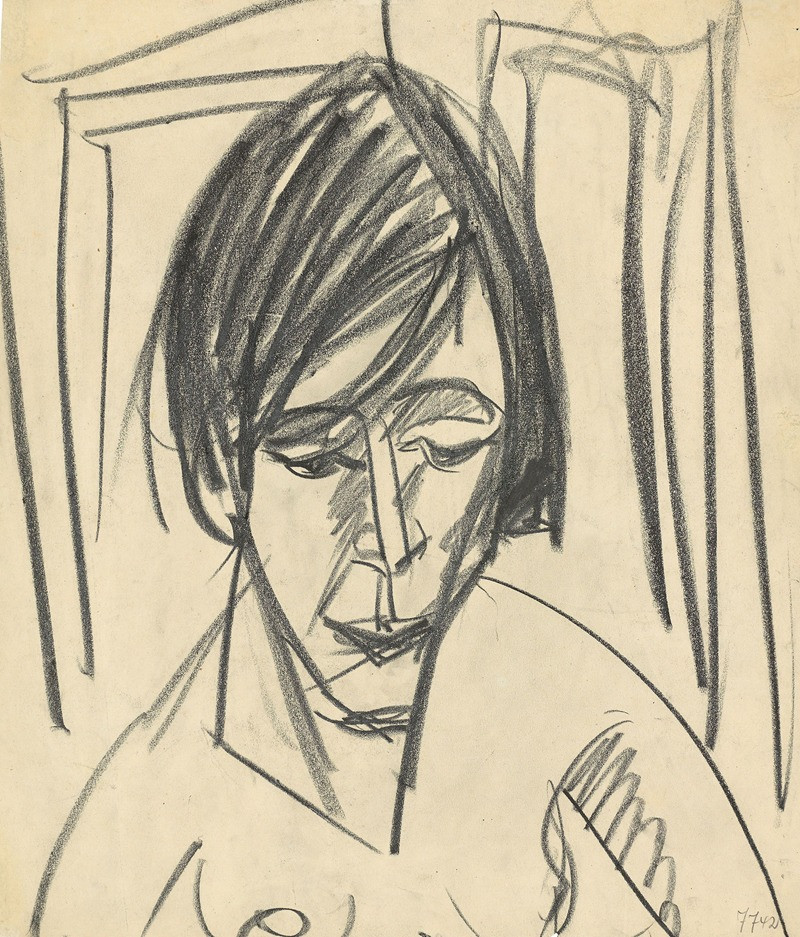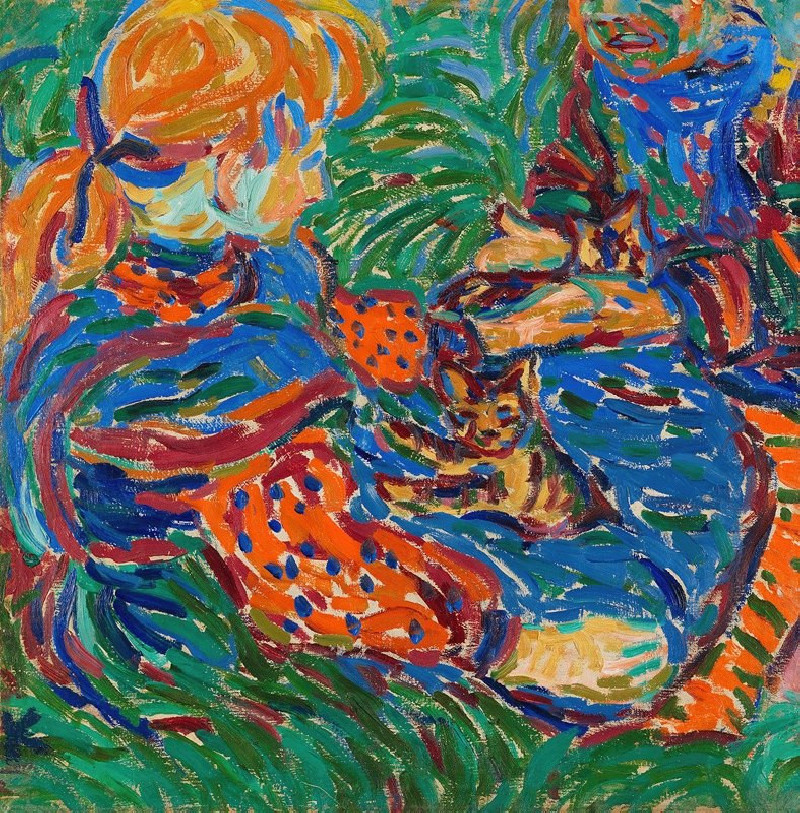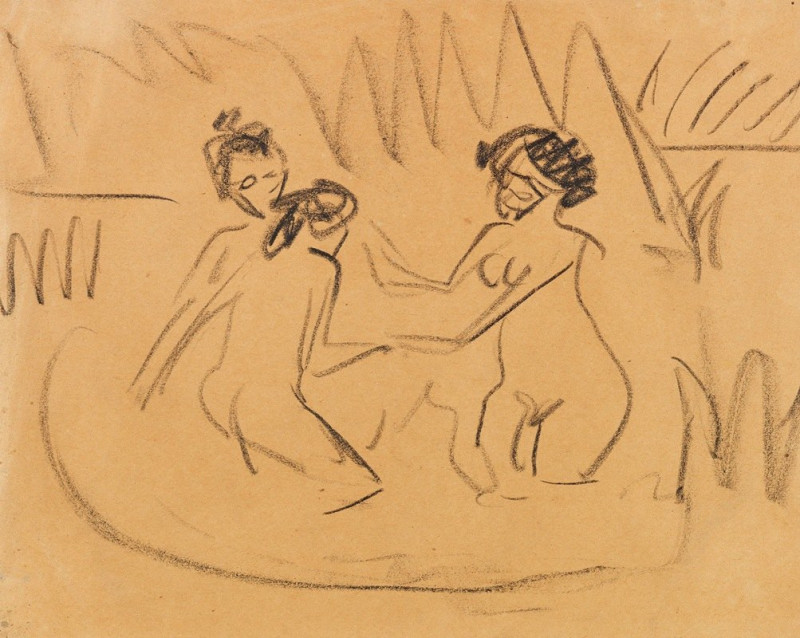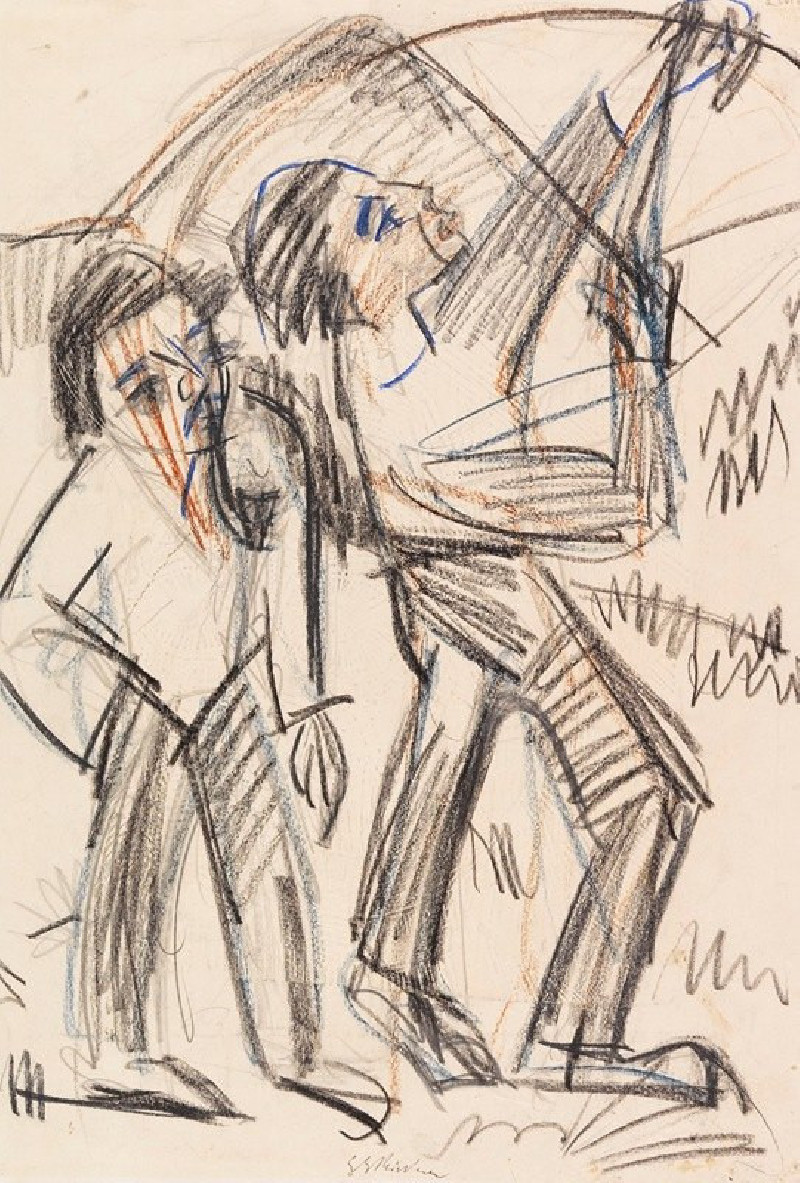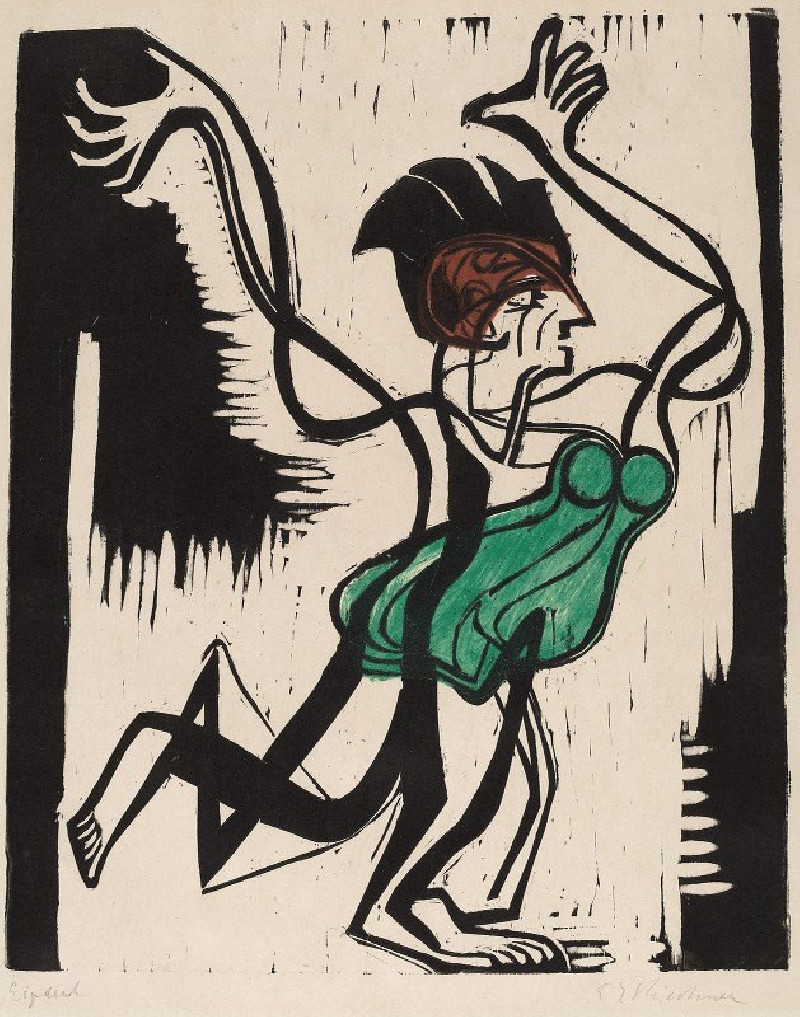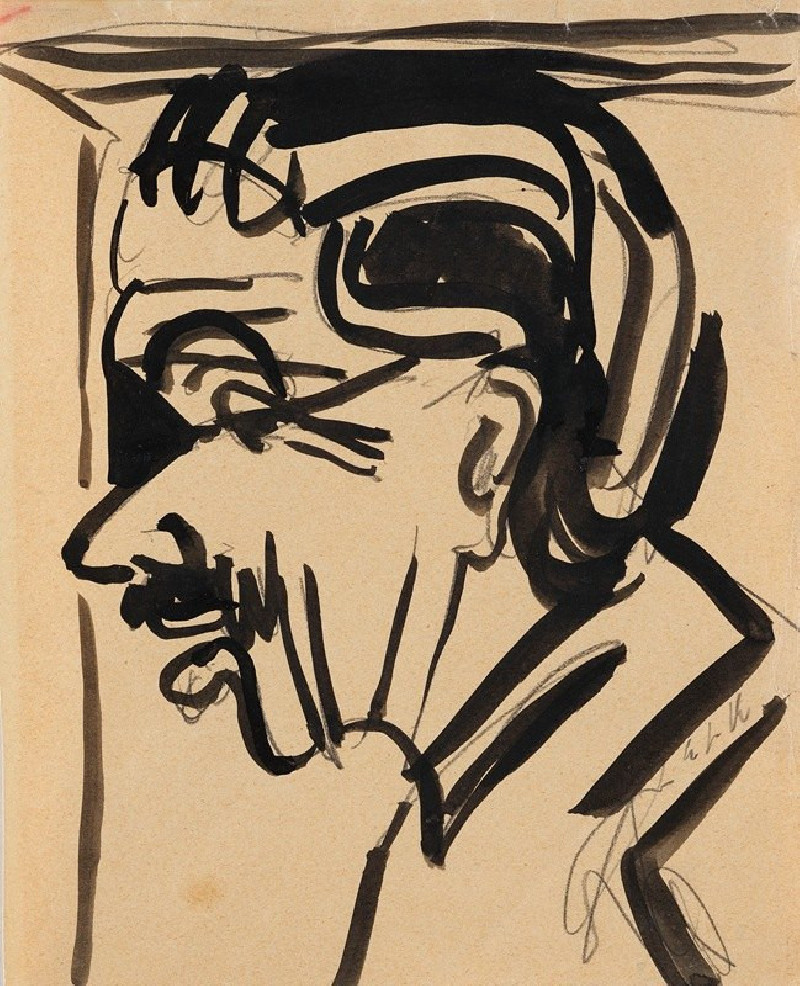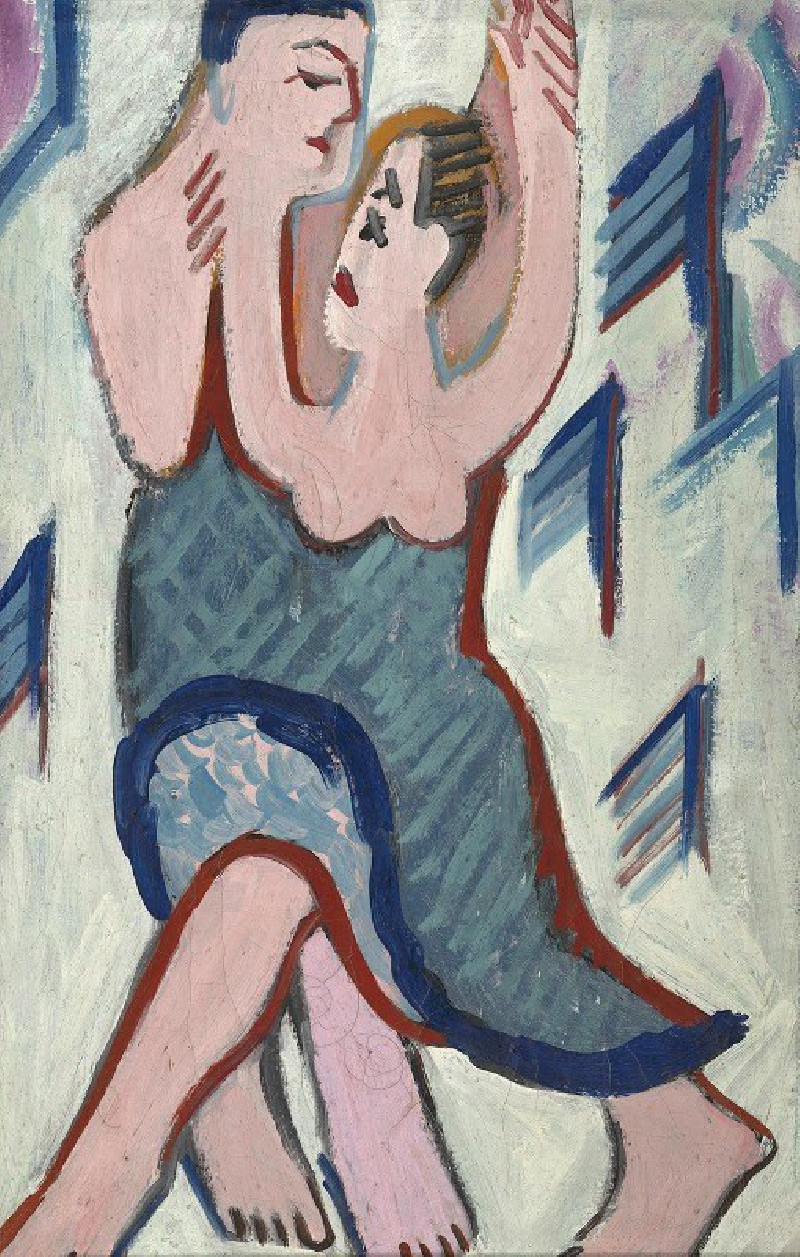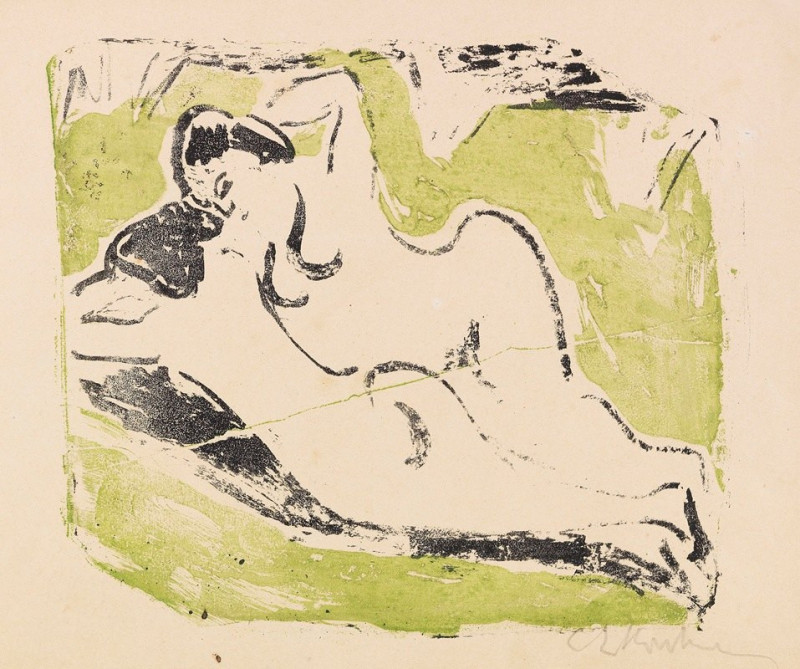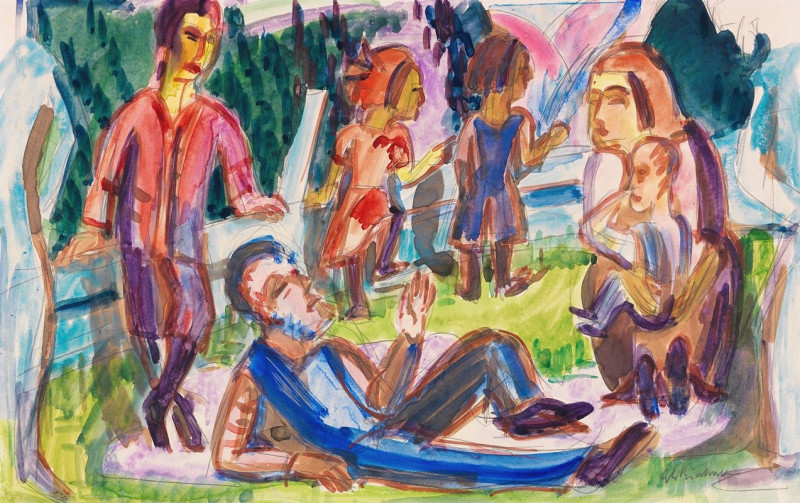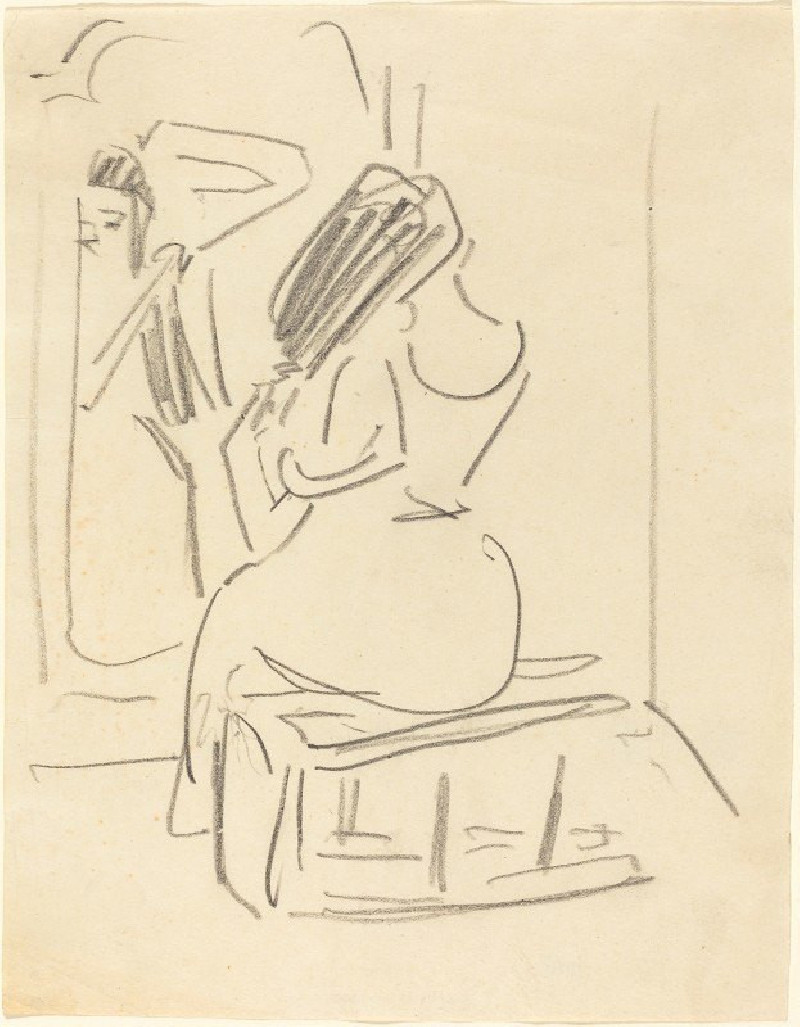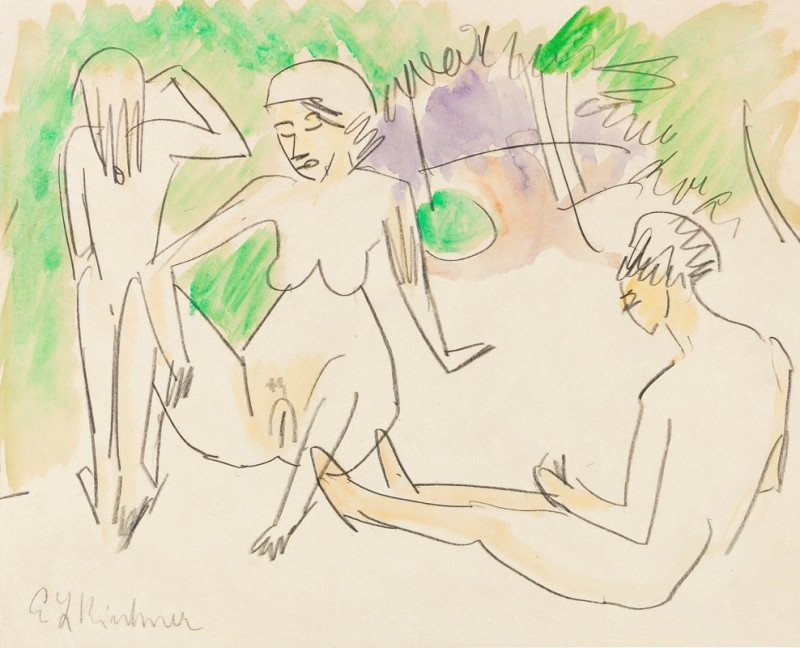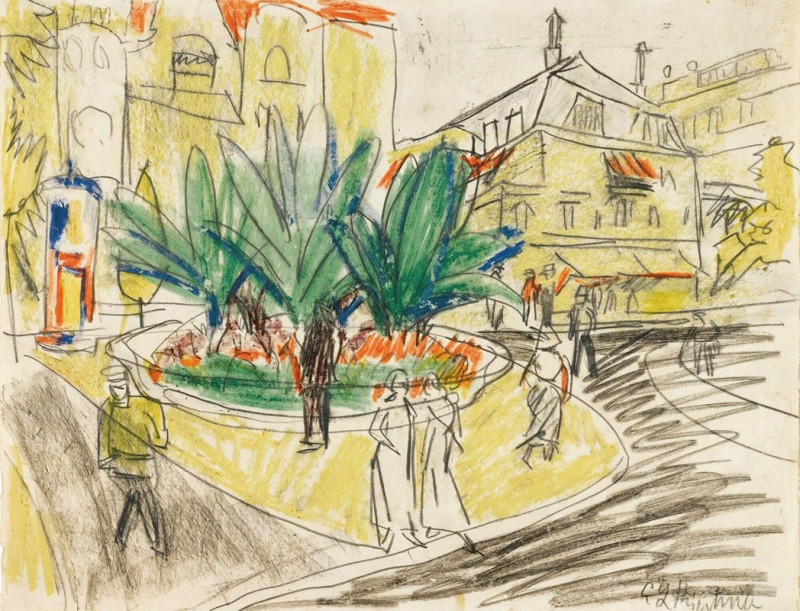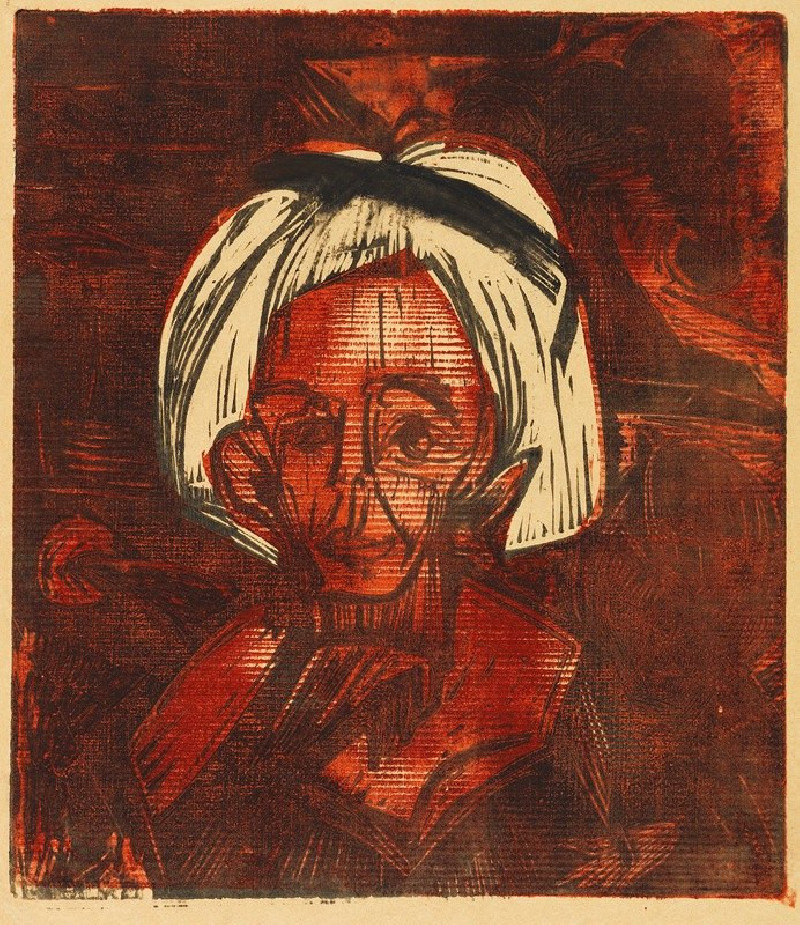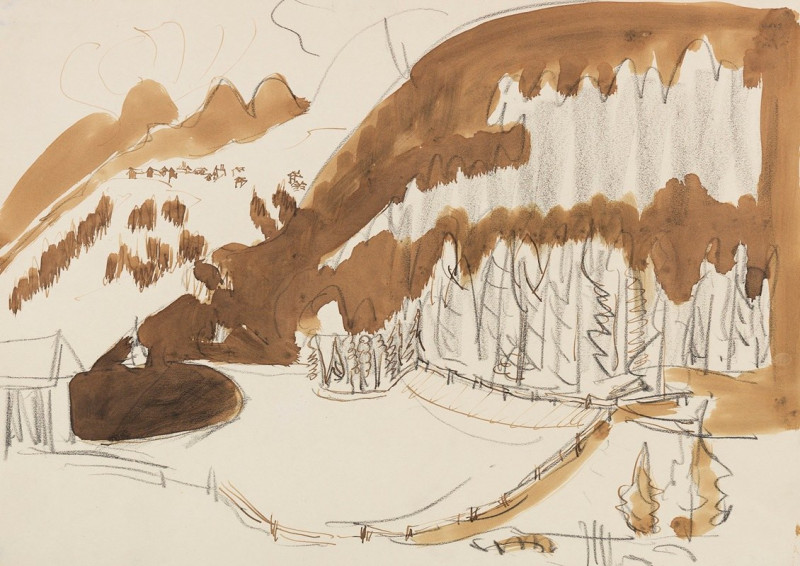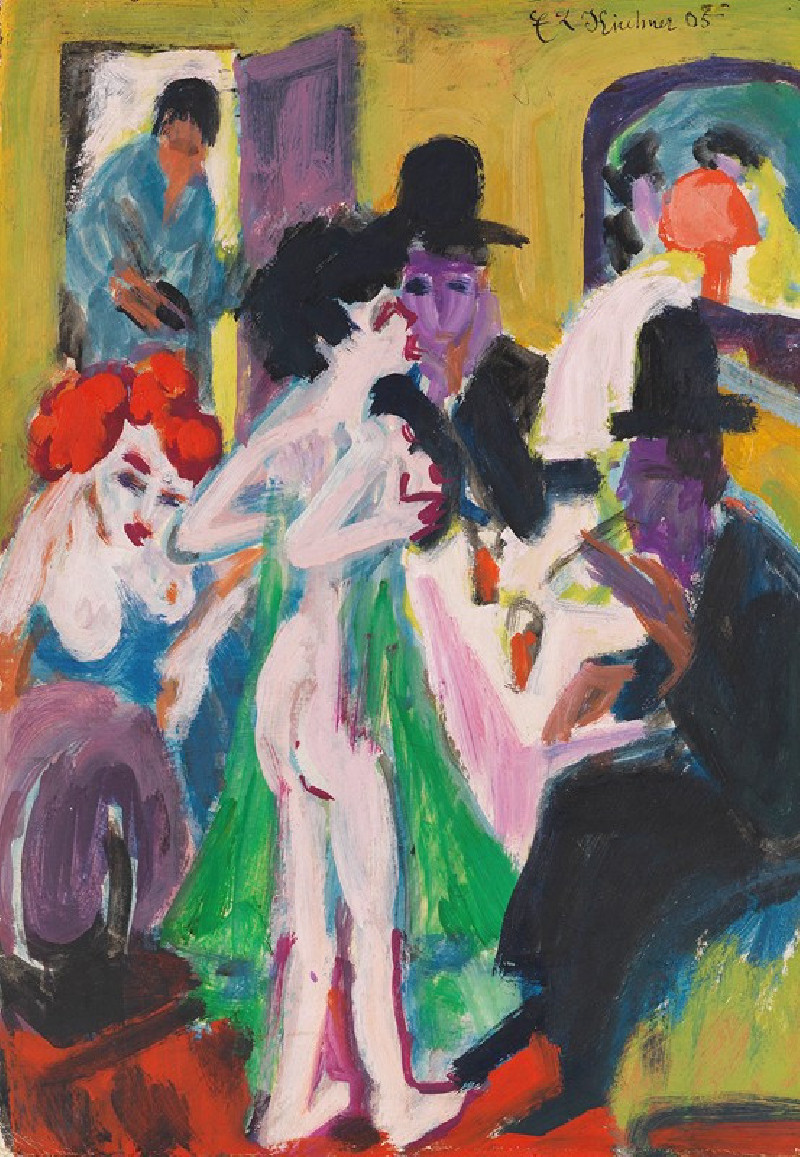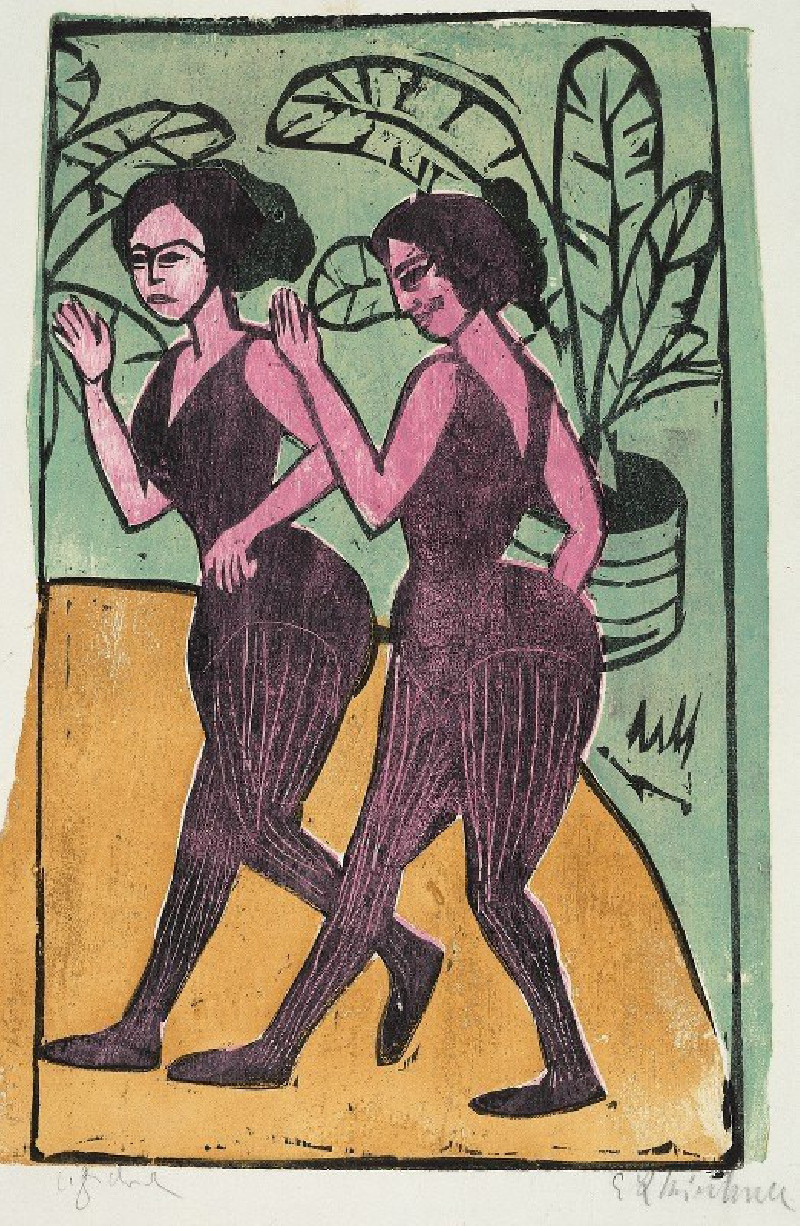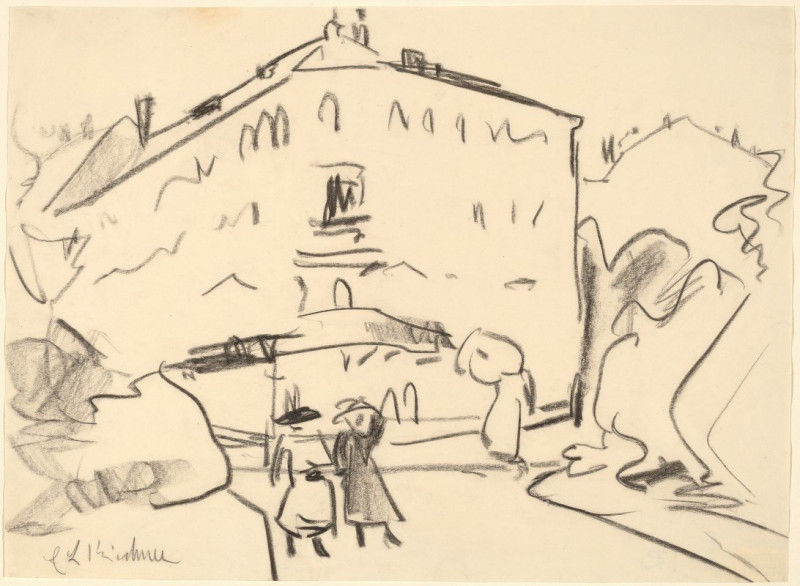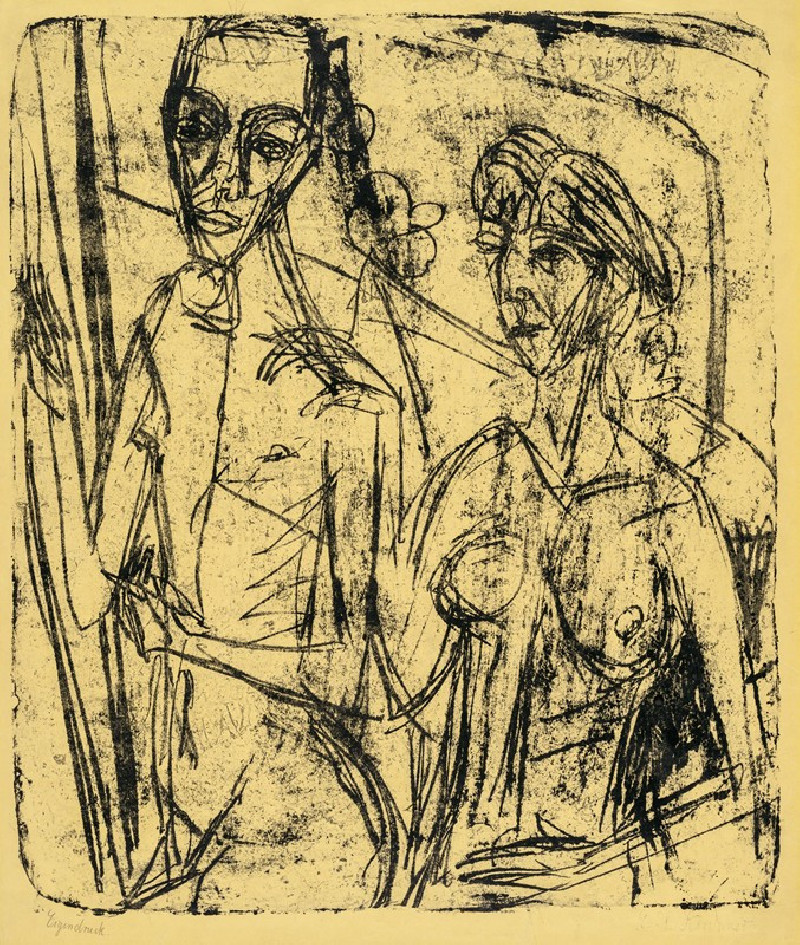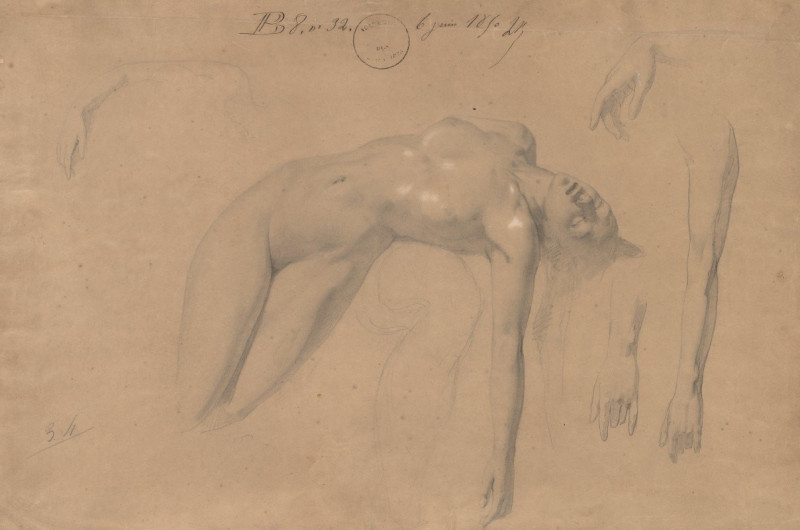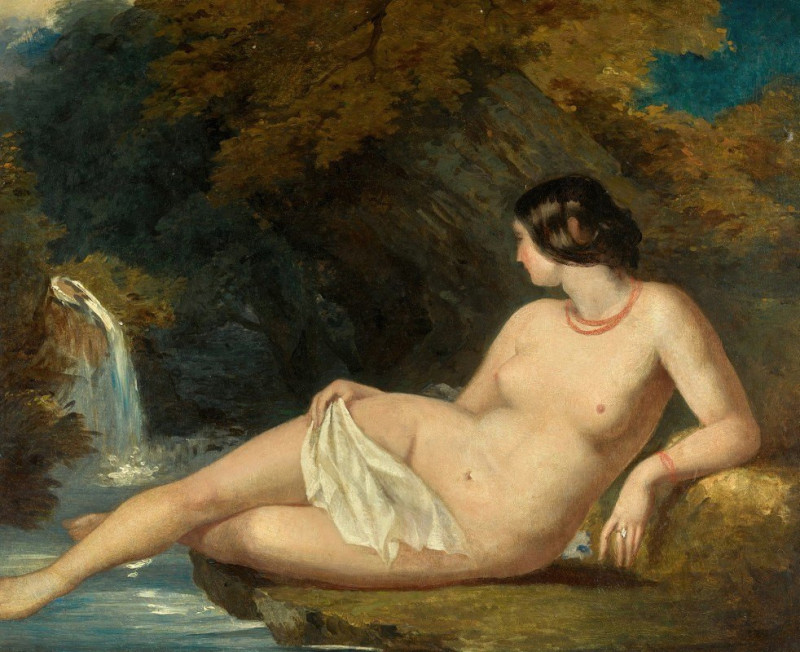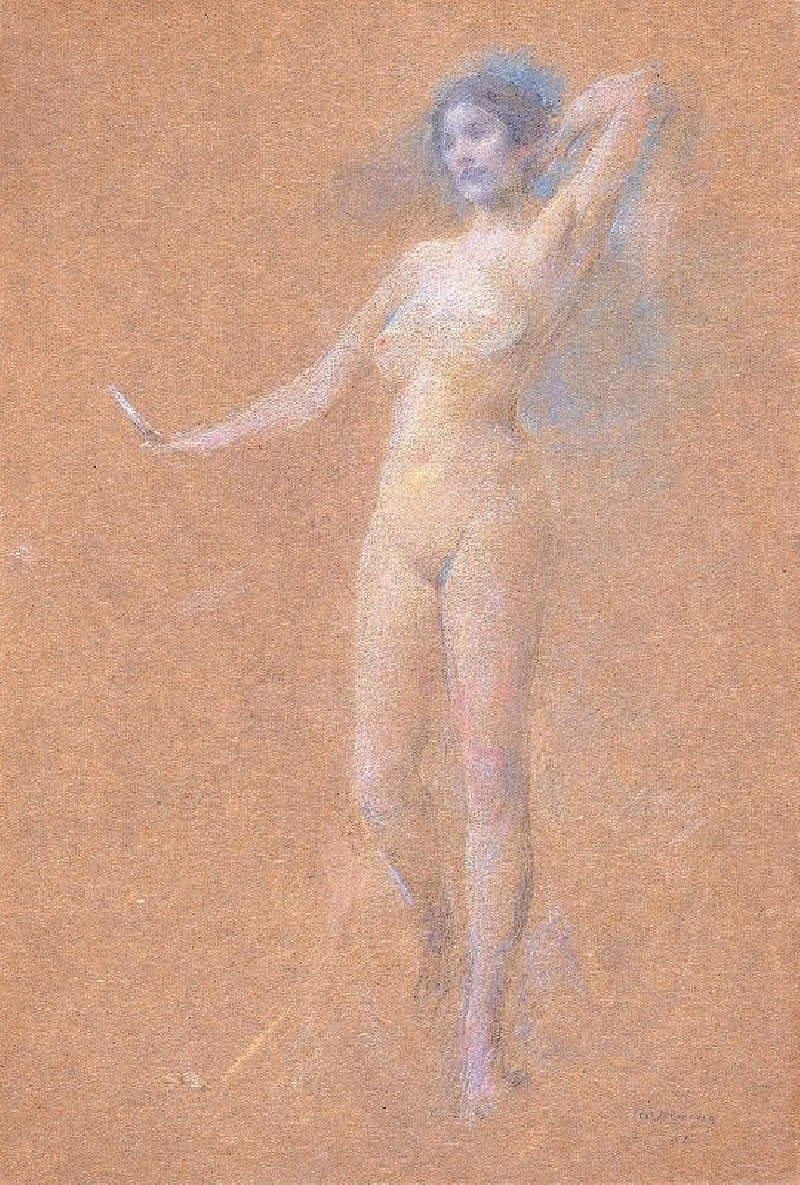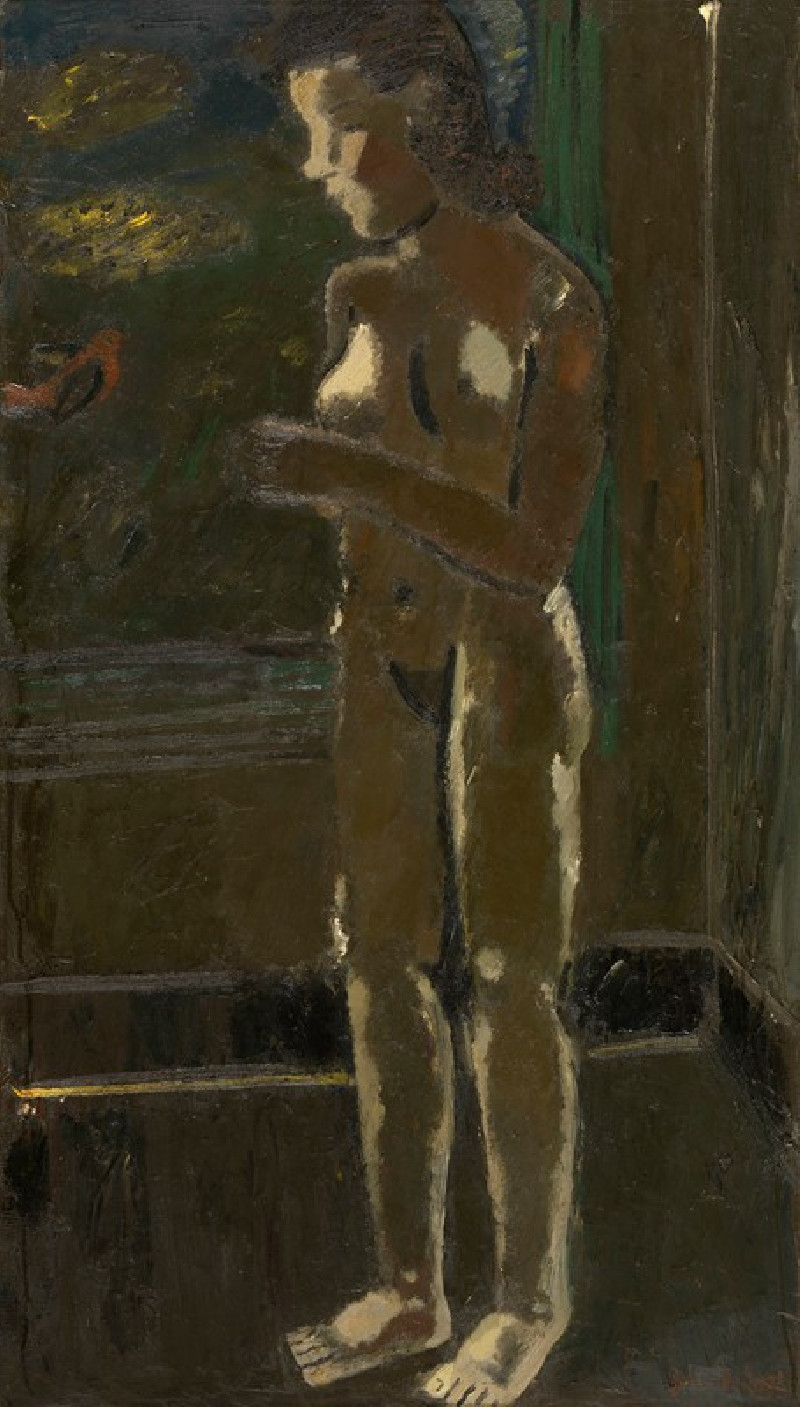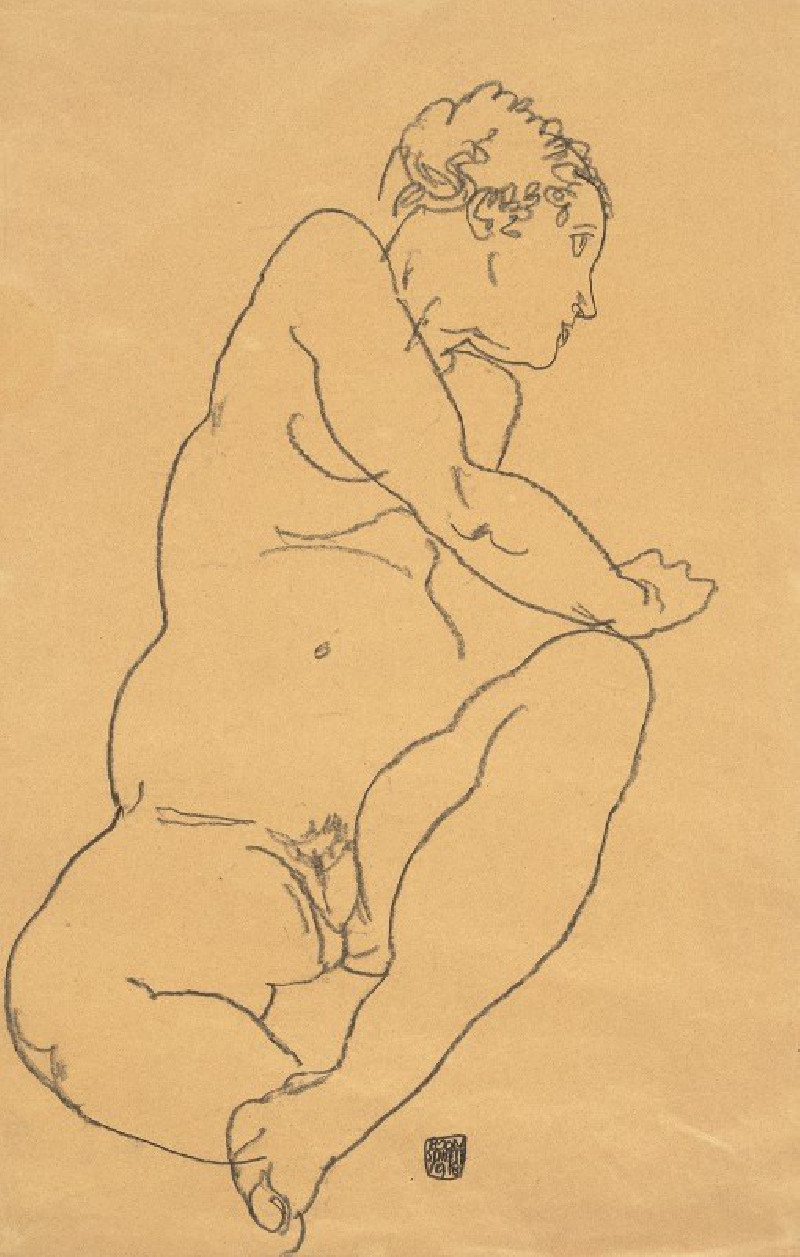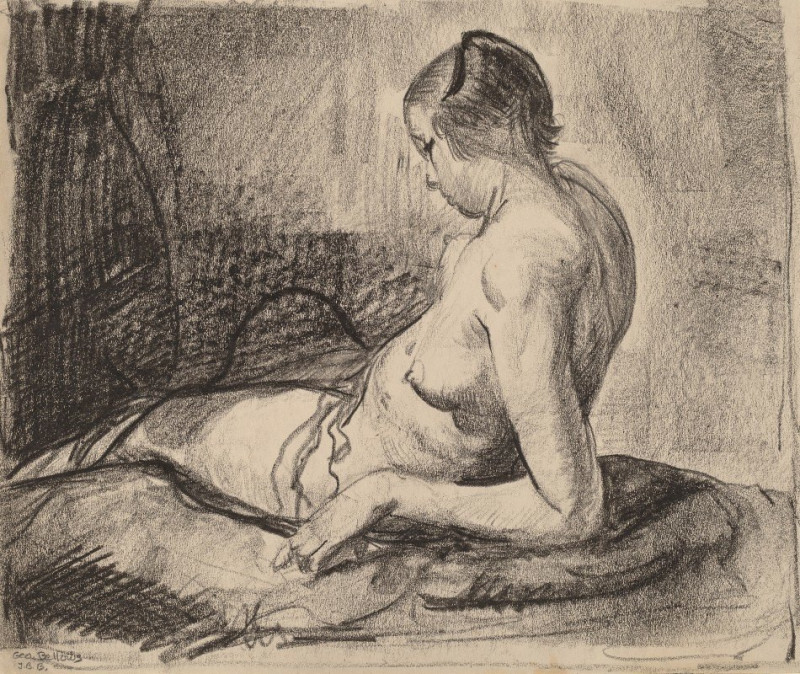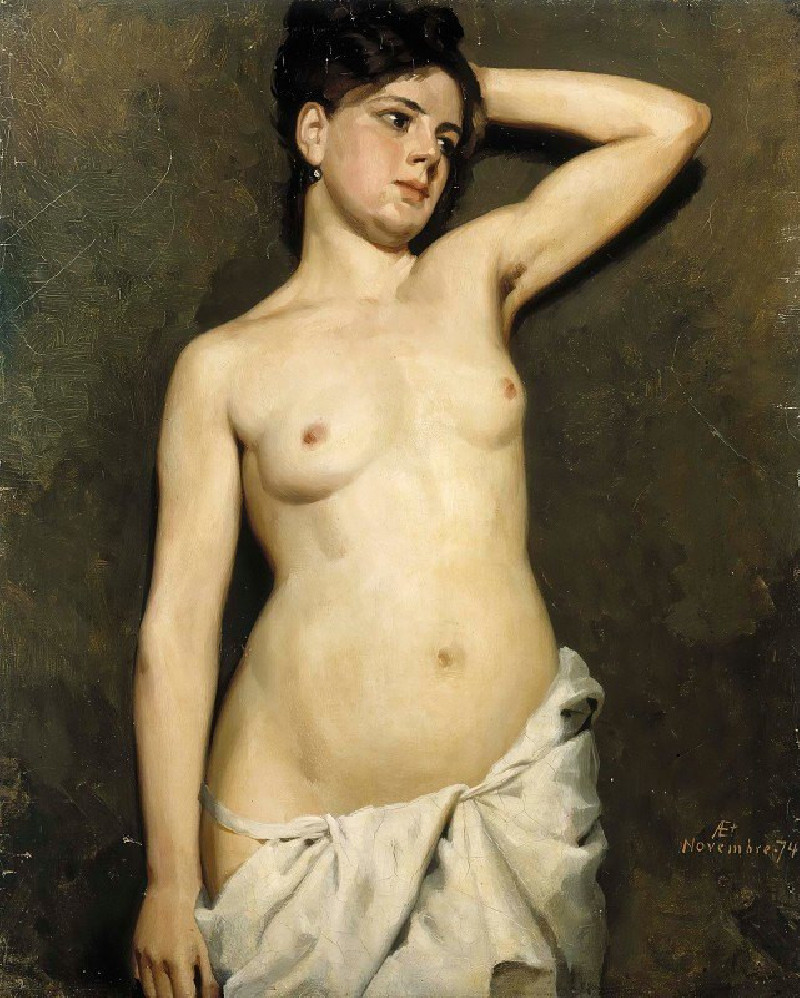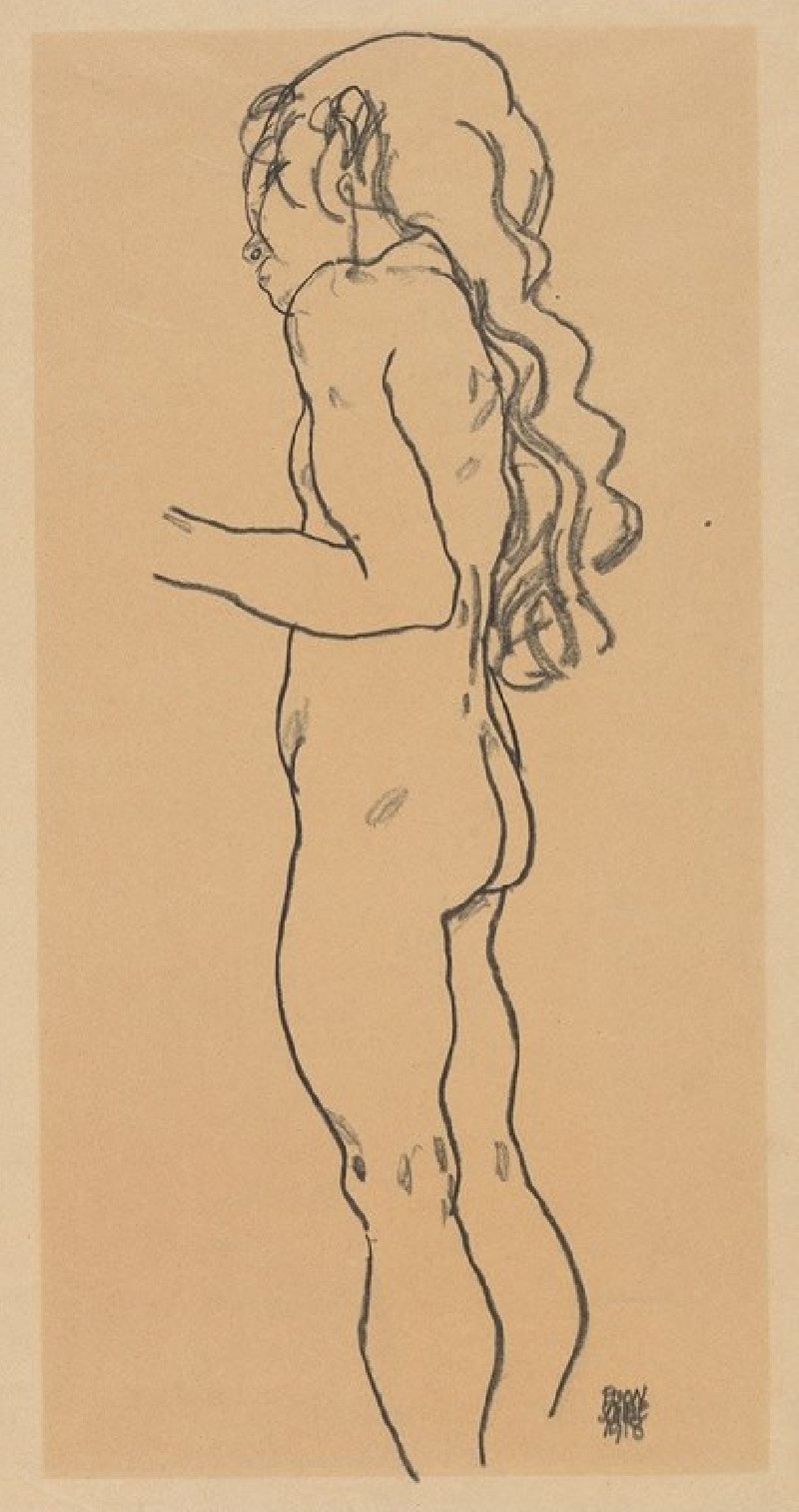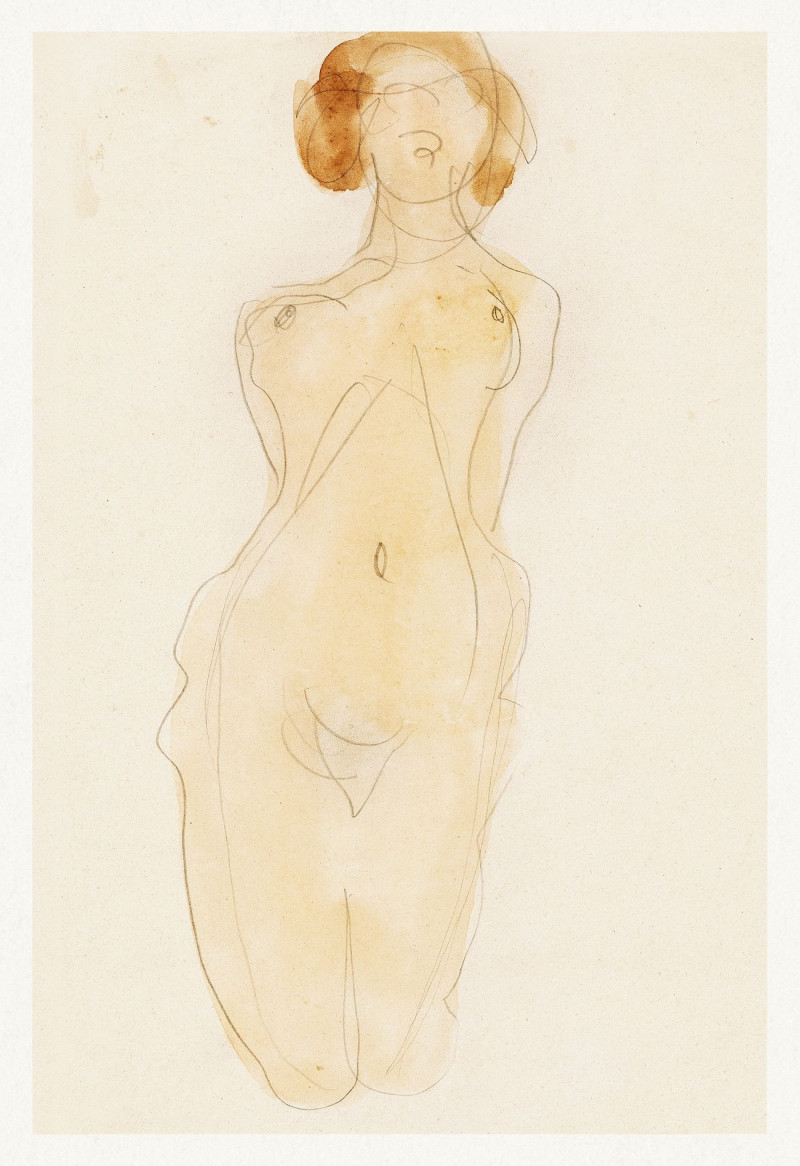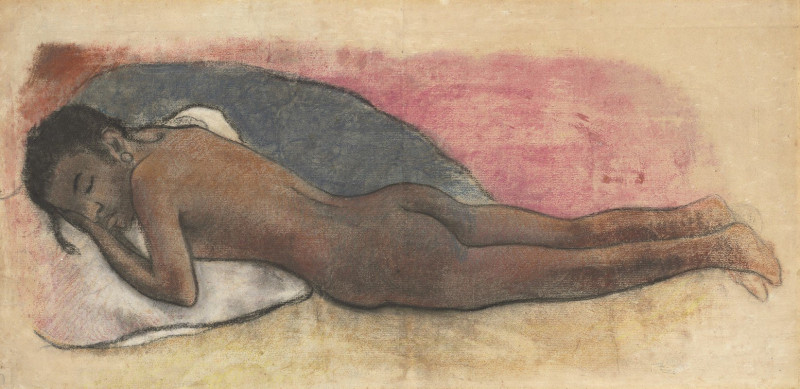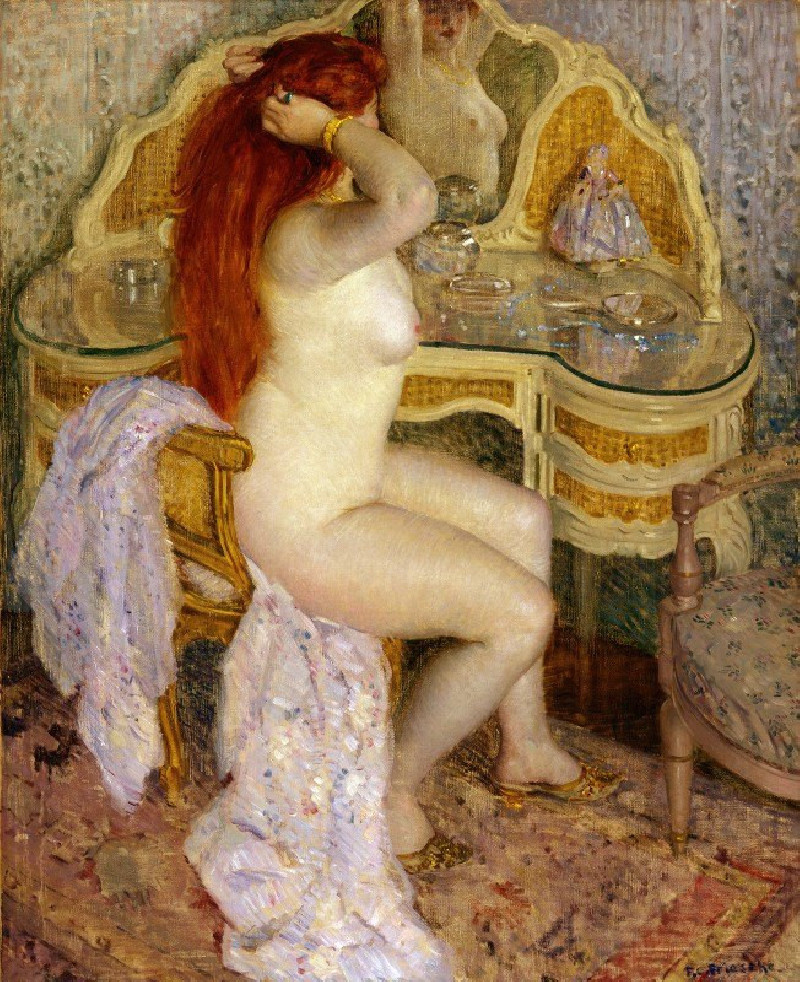Lying nude (ca. 1923)
Technique: Giclée quality print
Recommended by our customers
More about this artwork
"Lying nude" (ca. 1923) by Ernst Ludwig Kirchner is a stirring example of expressionist art, which captures more than just the visual semblance of its subject—it captures a mood, an emotion. In this painting, Kirchner employs bold, fluid black strokes to sketch the figure of a nude woman reclining comfortably, yet with a bold presence. Her form is simplified and abstract, with the emphasis on the contour lines and the dramatic contrasts created by the dense black ink against a stark white background.The subject's pose and expression are relaxed and introspective, giving viewers a window into a private moment. Her elongated limbs and the flow of her hair are rendered with a dynamic, almost hurried stroke, contributing to a sense of movement and immediacy. The background is minimally suggested, with only sparse lines to indicate the boundaries of the space, focusing all attention on the central figure.This powerful representation invites the viewers to experience the subject's tranquility and the artist's passionate engagement with form and composition.
Delivery
Returns
Ernst Ludwig Kirchner (1880–1938) was one of the most important German Expressionist painters. He was a co-founder of Die Brücke, a group of German expressionist artists formed in Dresden in 1905. Die Brücke and Kirchner took inspiration from Vincent Van Gogh and Edvard Munch, as well as African and Oceanic art. They used woodblock printing as a medium to showcase their signature style: flat, unrealistic images with vivid colors. The recurring themes in Kirchner's artworks included exotic cultures, faraway landscapes, self-portraits, dancers and Berlin street life. His paintings and prints effectively portrayed non-European cultures despite the fact that he never traveled outside of Europe.

